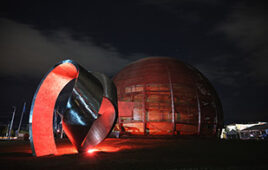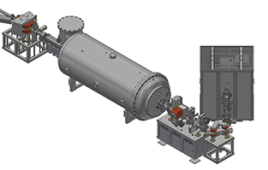News & Features
ORNL researchers probe invisible vacancies in fuel cell
materials
ORNL technology moves scientists closer to extracting uranium from
seawater
Ramgen Simulates Shock Waves, Makes Shock Waves Across Energy
Spectrum
ORNL researchers improve soil carbon cycling models
Video News
Coverage
RSS News
Feed
Podcast of
Audio News
ORNL Review

Story Tip
This is a story idea from the Department of Energy’s Oak Ridge
National Laboratory. To arrange for an interview with a researcher,
please contact the Communications and External Relations staff
member identified at the end of the tip.
SUPERCOMPUTING — Ramping up realism .
. .
A special report (see link below) shows speedups of 1.5- to
3-fold for most scientific application codes running on
extreme-scale hybrid supercomputers using code accelerators largely
developed for the video game industry. The addition of graphics
processing units to today’s fastest central processing units
promises significant increases in supercomputing capacity.
Scientists, engineers and computing experts presented the findings
recently in Washington, D.C., at the Accelerating Computational
Science Symposium 2012, which the Oak Ridge Leadership Computing
Facility co-hosted with the National Center for Supercomputing
Applications, the Swiss National Supercomputing Centre, Cray Inc.
and NVIDIA. Code acceleration promises increased realism of
simulations and decreased time to results in such hybrid
supercomputers as Oak Ridge National Laboratory’s Titan, in which
GPUs will be installed by year’s end to deliver 20 petaflops of
peak performance. Advances now possible with hybrid supercomputers
include deeper understanding of phenomena from earthquakes to
supernovas and faster innovations of materials and devices. The
report is available at
http://www.olcf.ornl.gov/wp-content/uploads/2012/07/ACSS_Final_v3.pdf.




